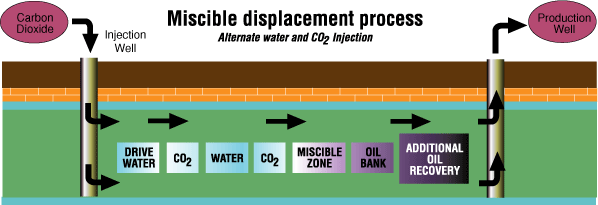
Waterflooding is a very effective oil recovery improvement technique. This technique began at the beginning of the 20th century, but it is still popular—and widely used—in the vast majority of oil fields. Waterflooding is a secondary oil recovery technique in which water is injected into the reservoir formation to displace residual oil. The water from injection wells physically sweep the displaced oil to adjacent production wells. It allows improving the recovery of oil and maintaining reservoir pressure. The method increases oil recovery from 20% to 40% of the original oil in place on average. However, many secondary waterflooding attempts have failed due to a paucity of data or inept assessment failed to disclose the true nature of the prospect. The effect of waterflooding is critically affected by characteristics of the reservoir (geological structure, internal architecture, properties of reservoir rock and fluids) and the specifics of the oilfield development scheme. For successful investment it is necessary to assess the prospects of the project in advance and choose the most potentially successful ones.
Challenges
The success and efficiency of waterflooding depends on many characteristics of both the reservoir and development parameters. It could strongly depend on the previous reservoir performance, lateral and vertical permeability, porosity distribution, residual oil, mobility ratio, well spacing, and other parameters. Nowadays, various methods are used in practice for oil recovery performance forecast. All commonly used methods can generally be divided into reservoir numerical simulations and reservoir engineering analyses.
The application of such standard methods at the stage of assessing the potential of a project requires a lot of effort. There may be insufficient data in the early stages to apply complex physics-based models. In addition, the forecast of the production curves may be unnecessary. This is especially evident where, among hundreds of potential projects, the most promising ones should be selected. Often, all available information represents the averaged reservoirs characteristics. Such parameters refer to reservoir geometry, geology, transport, and fluid properties. Using these data, project effects need to be assessed as accurately as possible.
The Data-Driven Solution

To select the most successful candidates, it is necessary to rank the potential IOR projects according to the efficiency metrics estimated with some models. The most commonly used effect metrics include:
- Secondary Ultimate Oil/Primary Ultimate Oil
- Substitution Index (SI)
- Expected Ultimate Recovery (EUR)
The data-driven ML approach, having relatively rich historical training data, is suitable for estimating valuable performance metrics for waterflooding projects. One can build a model that takes a given set of parameters as input and predict various target values that can be useful in risk assessment analysis (for example oil rate leap or years to extract 80% of secondary oil). The goal is to relate several waterflooding project metrics to real operator effect evaluations made in the final stages of waterflooding projects to assess the potential of secondary oil recovery projects. This results in ranking and selecting the most successful potential waterflooding projects demonstrated huge potential for real application.
The ML models have the ability to capture the dependence between a waterflooding project’s performance metrics on its averaged characteristics, known before the project start. The ranking of projects according to the predicted secondary ultimate oil/primary ultimate oil, and further classification will be consistent with the factual project performance which demonstrates the potential usefulness in practice. In conclusion, the use of ML models has great potential in practice and can reduce risks. In addition, it has been shown that a wide range of performance metrics can be predicted that can be useful at the stage of project evaluation and could help facilitate the decision-making process.
